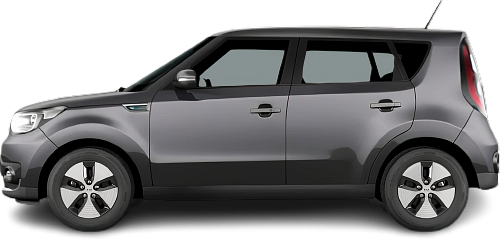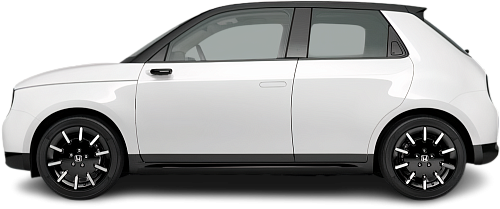Global EV Comparison: Kia Soul EV Gen 2 vs Honda e Base
Struggling to Decide? Let AI Help!
Your AI Summary Is Ready!
General Info
Since both vehicles have been discontinued, they are now only available on the used car market. You can get the Kia Soul EV (2017-2019) for as low as €10900, while the Honda e (2020-2022) begins at €14900.
The Kia Soul EV (2017-2019) is a SUV, whereas the Honda e (2020-2022) is a Hatchback.
| Property | Kia Soul EV Gen 2 | Honda e Base |
|---|---|---|
| Years of Production | 2017-2019 | 2020-2022 |
| Current Status | Discontinued | Discontinued |
| Country of Manufacture | South Korea | Japan |
| Body Style | SUV | Hatchback |
| Market Availability | EU, USA | EU |
| Price Europe (Used) | €10900 | €14900 |
| GCC Score | 4.7 | 4.6 |
Range and Efficiency
Even though the Kia Soul EV (2017-2019) has a larger battery, the Honda e (2020-2022) higher energy efficiency results in a longer real-world driving range.
| Property | Kia Soul EV Gen 2 | Honda e Base |
|---|---|---|
| Range (EPA) | 179 km | - Range (EPA) |
| Range (WLTP) | - Range (WLTP) | 222 km |
| Range (GCC) | 179 km | 189 km |
| Battery Capacity (Nominal) | 33 kWh | 35.5 kWh |
| Battery Capacity (Usable) | 30 kWh | 28.5 kWh |
| Efficiency per 100 km | 16.8 kWh/100 km | 15.1 kWh/100 km |
| Efficiency per kWh | 5.97 km/kWh | 6.63 km/kWh |
| Range and Efficiency Score | 5.1 | 5.8 |
Charging
Both vehicles utilize a standard 400-volt architecture.
The Kia Soul EV (2017-2019) offers faster charging speeds at DC stations, reaching up to 50 kW, while the Honda e (2020-2022) maxes out at 46 kW.
Both vehicles are equipped with the same on-board charger, supporting a maximum AC charging power of 6.6 kW.
| Property | Kia Soul EV Gen 2 | Honda e Base |
|---|---|---|
| Max Charging Power (AC) | 6.6 kW | 6.6 kW |
| Max Charging Power (DC) | 50 kW | 46 kW |
| Architecture | 400 V | 400 V |
| Charge Port | CHAdeMO | CCS Type 2 |
| Charging Score | 3.5 | 3.6 |
Performance
The Honda e (2020-2022) is rear-wheel drive, while the Kia Soul EV (2017-2019) offers a front-wheel drive system.
The Honda e (2020-2022) boasts greater motor power and accelerates faster from 0 to 100 km/h.
| Property | Kia Soul EV Gen 2 | Honda e Base |
|---|---|---|
| Drive Type | FWD | RWD |
| Motor Type | PMSM | PMSM |
| Motor Power (kW) | 81 kW | 100 kW |
| Motor Power (hp) | 109 hp | 134 hp |
| Motor Torque | 285 Nm | 315 Nm |
| 0-100 km/h | 11.2 s | 9 s |
| Top Speed | 145 km/h | 145 km/h |
| Performance Score | 2.4 | 2.8 |
Dimensions
The Kia Soul EV (2017-2019) is longer, wider, and taller.
Both models have similar wheelbase lengths.
| Property | Kia Soul EV Gen 2 | Honda e Base |
|---|---|---|
| Length | 4140 mm | 3894 mm |
| Width (w/o Mirrors) | 1800 mm | 1752 mm |
| Height | 1593 mm | 1512 mm |
| Wheelbase | 2570 mm | 2538 mm |
Cargo and Towing
The Kia Soul EV (2017-2019) provides more cargo capacity, featuring both a larger trunk and more space with the rear seats folded.
Neither car is equipped with a frunk (front trunk).
Neither vehicle is officially rated for towing in in the EU.
| Property | Kia Soul EV Gen 2 | Honda e Base |
|---|---|---|
| Number of Seats | 5 | 4 |
| Curb Weight | 1492 kg | 1588 kg |
| Cargo Volume (Trunk) | 281 l | 171 l |
| Cargo Volume (Max) | 891 l | 861 l |
| Cargo Volume (Frunk) | - Cargo Volume (Frunk) | - Cargo Volume (Frunk) |
| Towing Capacity | - Towing Capacity | - Towing Capacity |
| Cargo and Towing Score | 5.4 | 3.8 |




